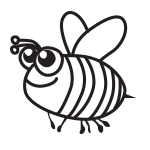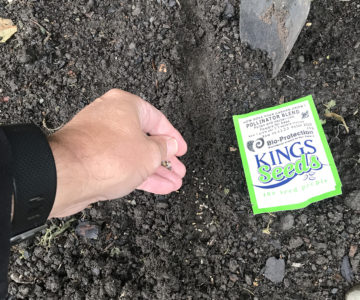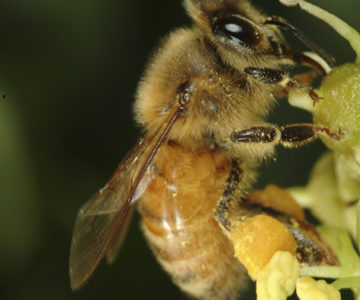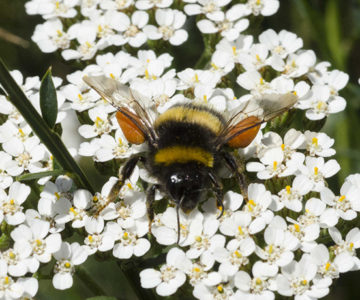Flowers for pollinators
All gardeners know something about the value of bees. They may not know, however, that bee-pollinated crops constitute a large proportion of the plants we consume. In many parts of the world, bee populations are declining because of habitat loss, pests and diseases and pesticide use. Bees depend on pollen and nectar from a wide range of flower species and we can maintain that diversity by sowing appropriate bee flowers in our gardens. This kit contains a packet of an ideal seed mixture (Pollinator Blend provided by Kings Seeds) to keep bees well fed in your garden.
Sowing seed
Sow some of the seeds on cultivated soil or in drills (grooves) in a sunny spot in your garden, add a little fertiliser and water frequently. It won’t be long before the seedlings appear and after that will come the attractive flowers. Sow some more every month until March.
- Try to identify each flowering species in the mix and record through careful observation which flowers are most often used by honeybees and bumble bees.
- Count the numbers of both bee species for a 5-minute period and see how the number changes through time.
- Using careful observation, record whether a particular bee is taking nectar only or filling the baskets on its hind legs with pollen.




Project 1
Try to identify each flowering species in the mix and record through careful observation which flowers are most often used by honeybees and bumble bees.
Project 2
Count the numbers of both bee species for a 5-minute period and see how the number changes through time.
Project 3
Using careful observation, record whether a particular bee is taking nectar only or filling the baskets on its hind legs with pollen.
How Does Your Garden Grow Kit
This unique kit is based on research carried out in the Bio-Protection Research Centre at Lincoln University in association with the BHU Organics Trust and Kings Seeds. The kit will help you to discover a number of important things such as the acidity of your soil (slightly acid for potatoes, slightly alkaline for brassicas) and how to attract bees to your crops and ladybirds to eat your pests.
